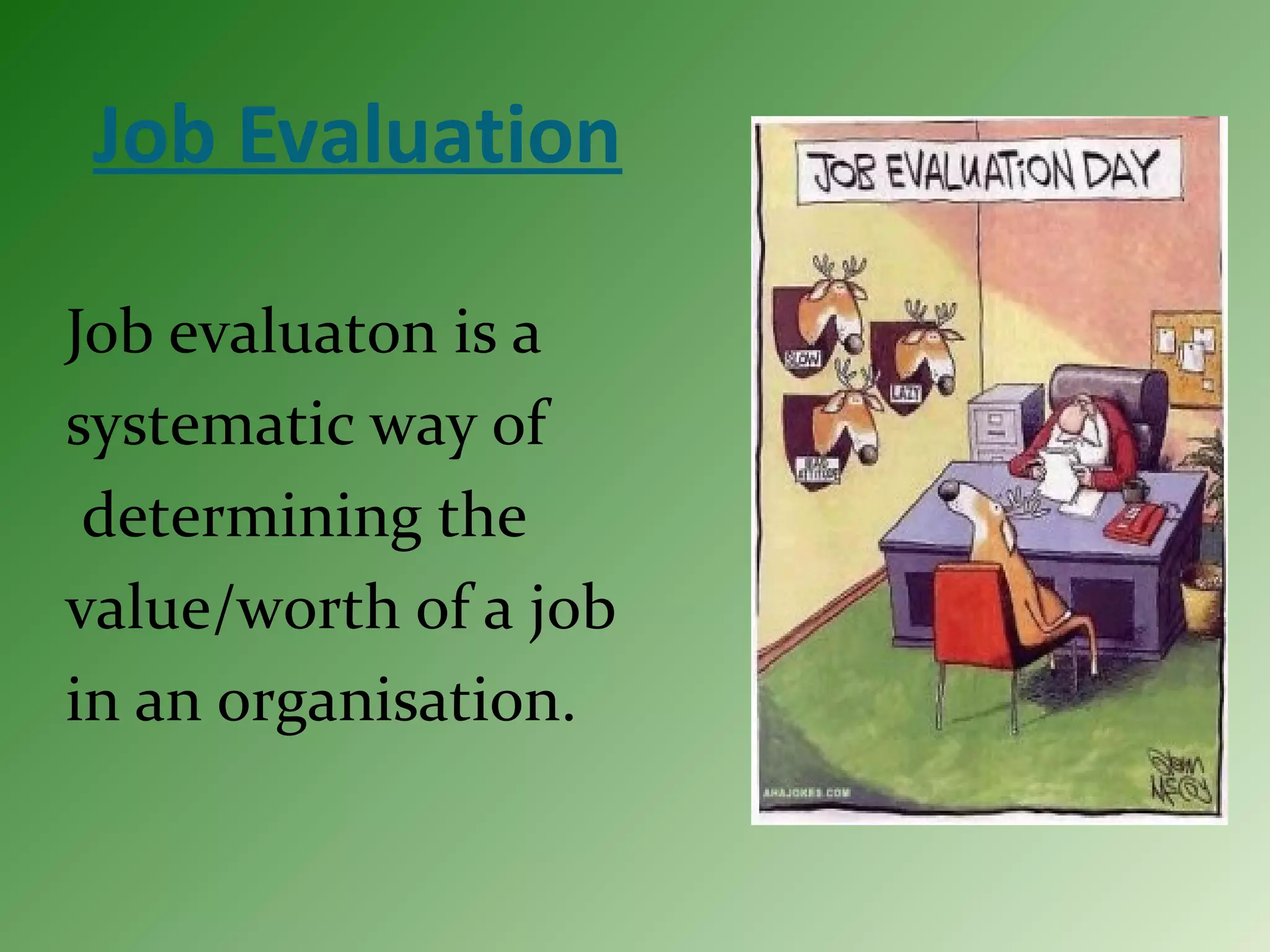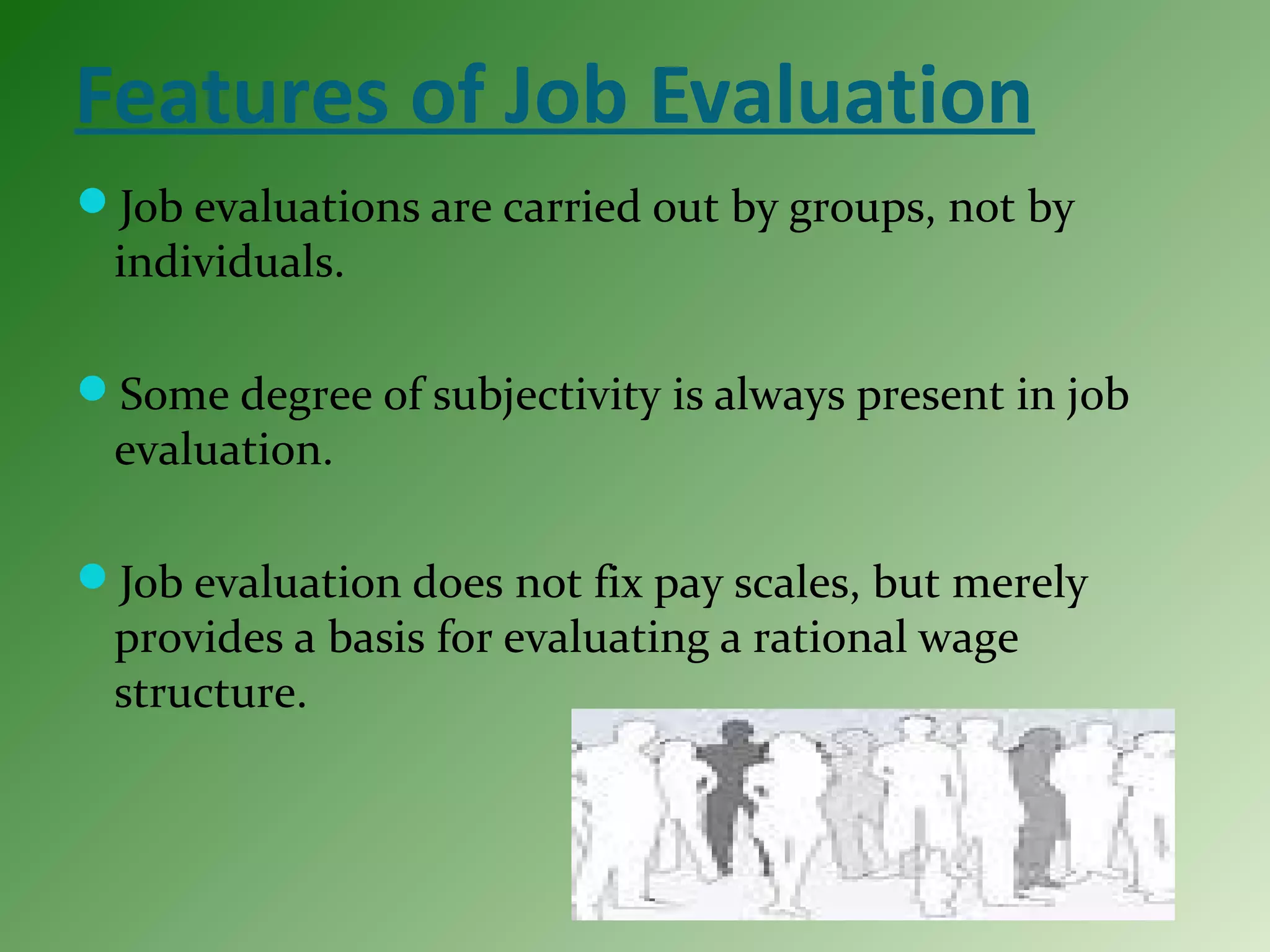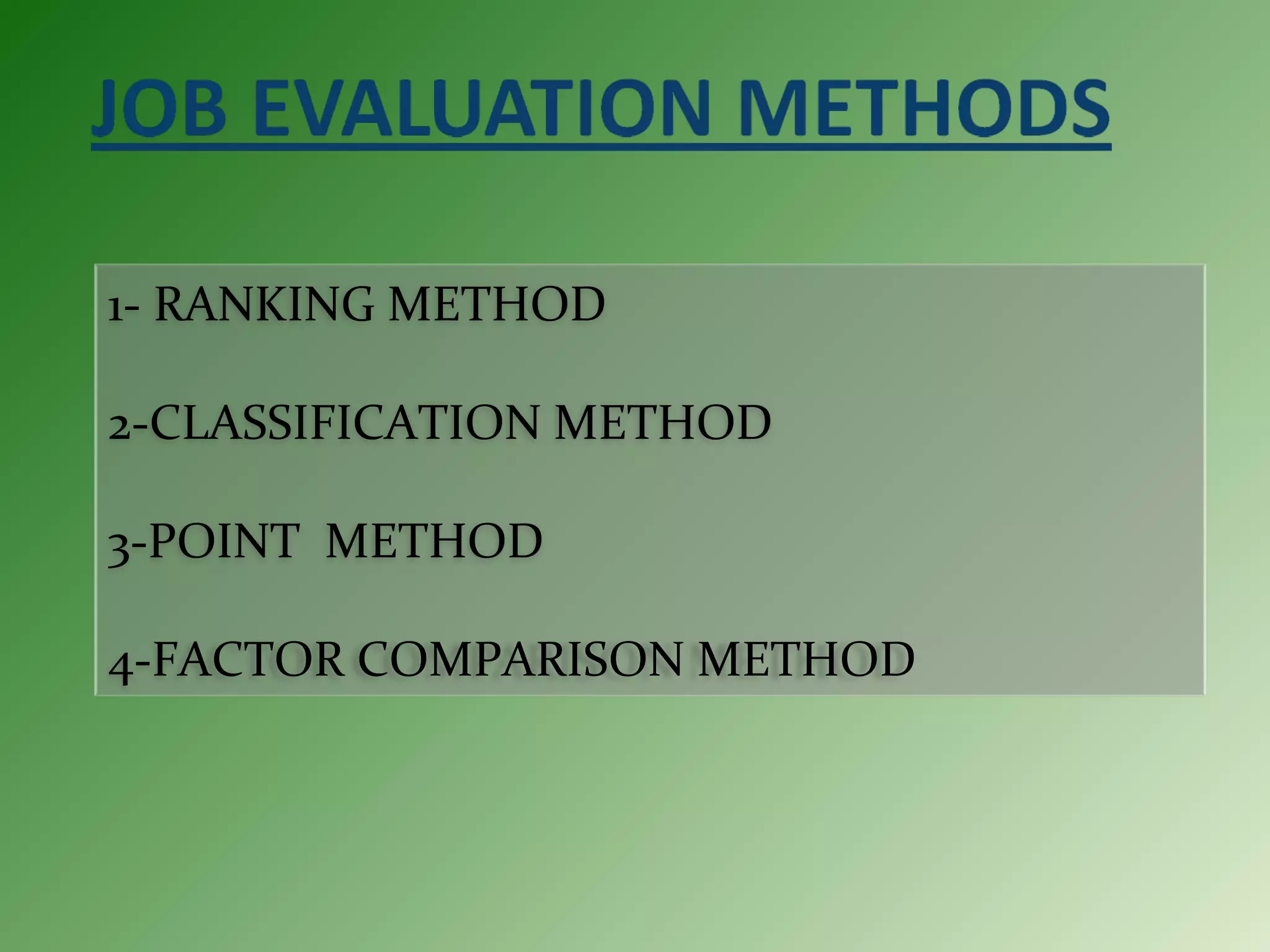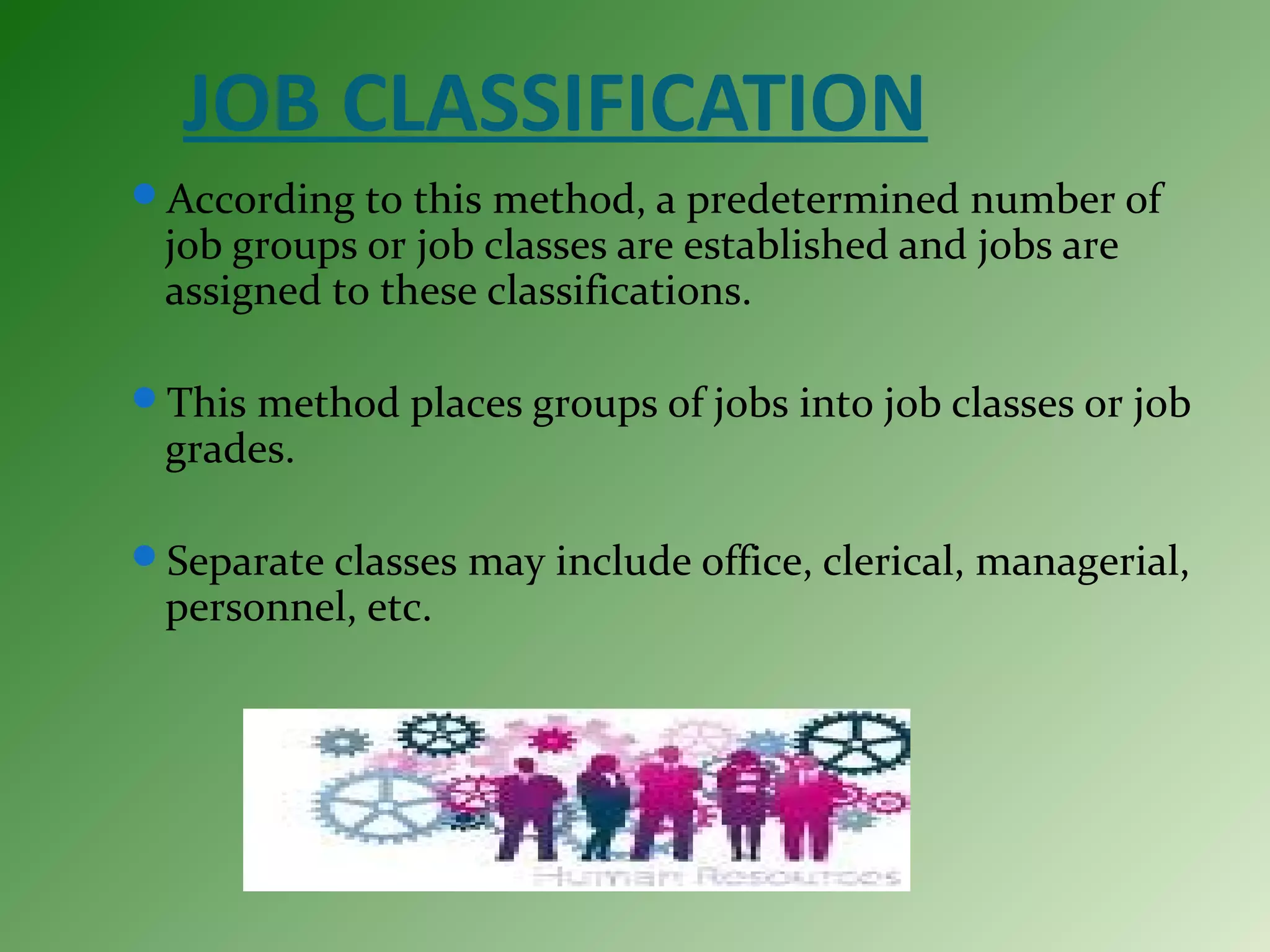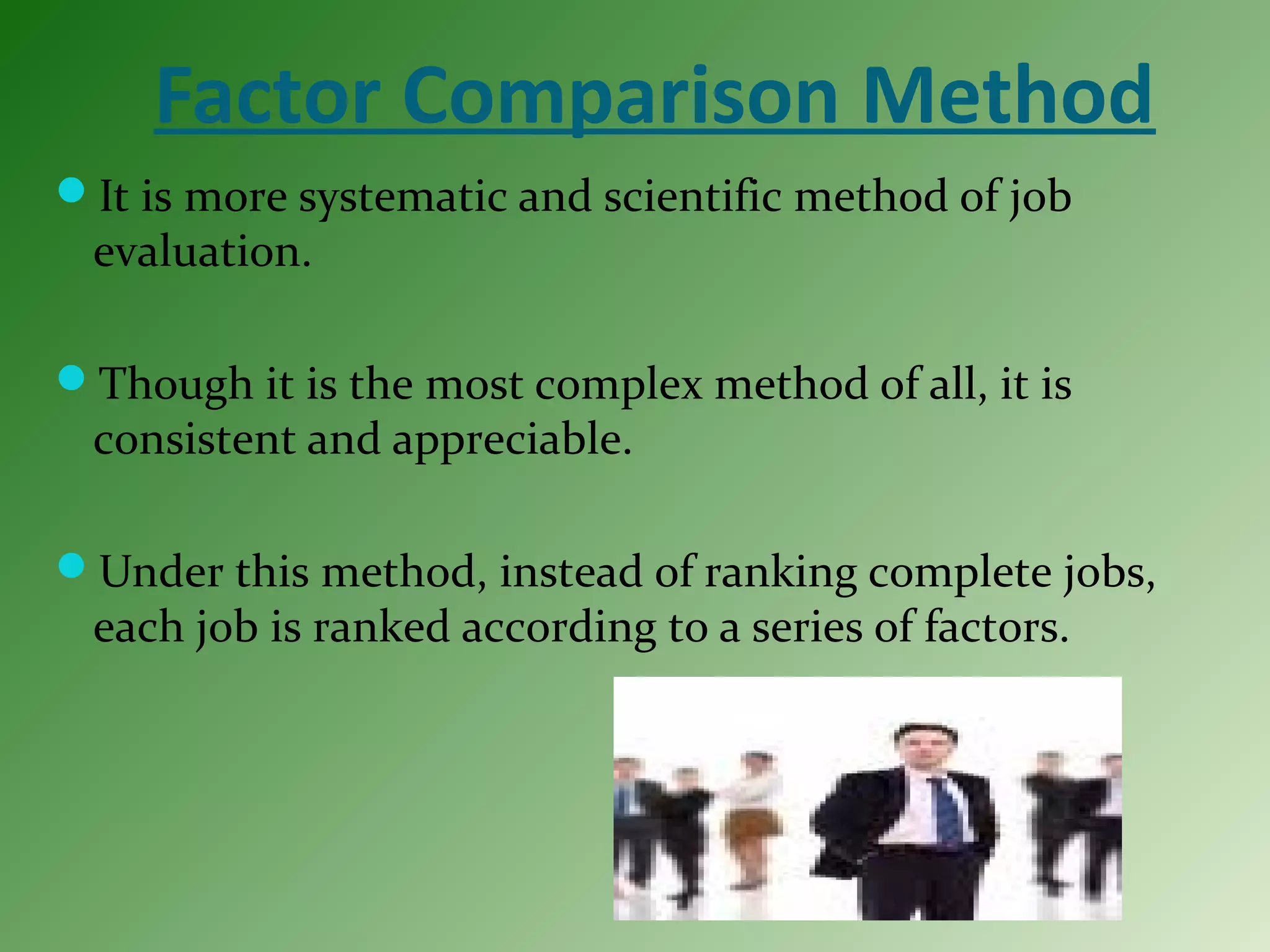This document discusses job evaluation, which is a systematic process for determining the value or worth of jobs within an organization. It describes the main steps in job evaluation, which include deciding which jobs to evaluate, analyzing each job and preparing descriptions, rating jobs based on selected evaluation factors, and comparing jobs to determine appropriate compensation. The key factors used in evaluating jobs are knowledge, problem-solving abilities, and accountability. Several common methods for conducting job evaluations are also outlined, including ranking, classification, point, and factor comparison methods, along with their advantages and disadvantages.

